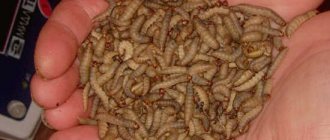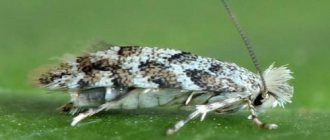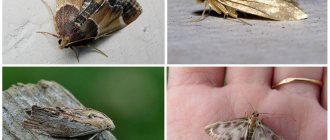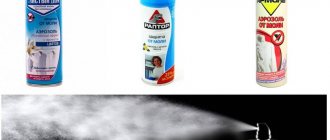Description of the pest
The food moth is a silver-white insect. There are special designs on the wings. The parasite can appear in the kitchen of clean housewives. Grain becomes infected with the pest in warehouses and storage facilities. It goes to stores, and from there into customers' bags. Therefore, moths appear quickly, and getting rid of them is problematic. It is important to catch the moment while there are few insects, otherwise they will spoil absolutely all the supplies.
The grain moth is widespread throughout Europe, as well as in Australia, Benin and Brazil.
If the conditions are comfortable, the moth becomes a real mistress in the kitchen. While on the cereals, females lay eggs in large quantities. The larvae, which appear in food after a short time, begin to eat food with an enviable appetite. The main emphasis is on flour, buckwheat, rye, rice, wheat.
After the caterpillar grows up, it secretes a special web with which it glues the grains together and then carries them around. Eventually, the caterpillar finds a secluded corner behind the baseboard or in a crack, creates a cocoon - a pupa is formed. Over time, a new butterfly will appear.
“We dry the broken ears of corn, put them in bags and put them in the pantry for storage. As soon as you open the bag in winter, small gray butterflies fly out of it, and the grains on the cobs are completely covered with small round holes. What kind of pest is this and how to fight it?”The grain moth is distributed throughout the world and is known as the most dangerous enemy of grain stocks. In areas with a warm climate, it multiplies in natural conditions and damages corn during the growing season, starting from the milky ripeness phase. In Ukraine, grain moths are considered one of the most dangerous barn pests. During storage, it can damage all grains on unthreshed cobs. A typical sign of grain contamination on the cob is round holes in its shell. After 15-20 days of feeding, only the shell remains of the damaged grain. Damaged grains lose their viability and are completely unsuitable for food. In addition to corn, moths can damage dried mushrooms and watermelon seeds.
The grain moth butterfly is grayish-yellow in color, with a wingspan of 10-16 mm. The front wings have two small black spots, pointed at the end, the hind wings have a notch at the apex. Female moths lay up to 150 eggs, from which pubescent yellowish caterpillars with a red-brown head hatch after 10-14 days. The caterpillars bite into the grain and feed on its endosperm, while they contaminate the grain with excrement and entwine it with cobwebs. After three weeks, the caterpillars pupate in the grain, forming cocoons, from which butterflies emerge after 1-2 weeks. In one grain of corn, 2-3 caterpillars can complete development and pupate. During the storage period of corn grain, 8 to 12 generations of the pest can develop. Control measures:
• thorough cleaning of the premises intended for storing corn grain from debris and remnants of last year's supplies;
• disinfection of the storage facility with lime-kerosene emulsion (200 g of freshly slaked lime and 100 g of kerosene per 1 liter of water);
• storage of corn grain on the cob at a moisture content not exceeding 14-15%. If the storage room has a concrete floor, a wooden board must be placed on it.
The best way to destroy grain moths in a warehouse is to spray (using a backpack sprayer) grain storage areas with one of the preparations [karate, 5% a.e. — 0.4 ml/m2; fastak, 10% e.g.—0.2 ml/m2; arrivo, 25 k.e.—0.8 ml/m2]. The working fluid consumption rate is 0.2 l/m2. It is important to know that warehouses or grain storage areas must be treated with pesticides at a temperature of at least 12 °C, when pests are active.
Caterpillars and eggs of grain moths in corn grains die if the room in which the grain is stored is heated for 4 hours to a temperature of 52 °C or cooled to -32 °C. In the spring, when it warms up, you should not unnecessarily stir up the grain remaining in storage in order to maintain its low temperature for as long as possible.
Victor GAVRILYUK
Fighting methods
All cereals and dried fruits must be placed in tightly sealed containers to prevent moths from reaching them.
Grain moth loves unventilated, warm, damp rooms . You can get rid of it in various ways:
- For preventive purposes, store grains in closed jars and tied plastic bags.
- It is recommended to throw away already affected products. If some of the grains are little affected, they can be processed in the oven for 15 minutes, temperature – 60 degrees. You can use a regular microwave.
- The cabinets where the grain is located are processed. The cracks are coated with a vinegar solution, and the shelves are washed with soapy water. The cabinet door should be open until it dries completely.
Special preparations
The safest way to get rid of a food moth infestation is to use pheromone-based traps
You can get rid of moths by various means - tablets, plates, sprays, etc.
The good thing about the plates is that they don’t have an unpleasant odor. They destroy not only adults, but also larvae. Combat readiness is maintained for six months.
Fighting with special means
The ideal habitat for grain moths is damp, poorly ventilated areas. For this reason, they are often found in kitchen cabinets. After detecting these pests, it is necessary to get rid of the affected products, and the cabinets where the cereals were stored should be thoroughly disinfected using soapy water and vinegar. Then the cabinets will need to be thoroughly dried and wiped again with vinegar water. You can get rid of grain moths using:
- tablets;
- plate;
- aerosols.
All chemicals can be divided into insecticides and repellents. The first option contains harmful chemicals that kill existing insects, while the second option repels new parasites. The most popular remedies for kitchen moths are Armol, Raptor, Antimol, Combat. Raptor is sprayed into the cabinets where cereals were stored, as well as into all the cracks in the kitchen where larvae are likely to be located. The effectiveness of this spray is observed throughout the year.
The drug Armol has a good effect on moth larvae; it is most often used to clean furniture and floor coverings. An important rule when using all chemicals that kill grain moths is that they should not come into contact with food.
Anti-moth plates or sections are considered quite effective in the fight against such parasites. They are produced in different scents: tangerine, chamomile, lavender, etc. The products release active substances that prevent moths from multiplying and repel adult moths. Popular manufacturers are Raptor, Globol and others. For such sections to be effective, they need to be changed every 4-5 months.
After treating kitchen cabinets with chemicals, it is necessary to ventilate the room and not fill the furniture with cereals for 2-3 hours so that the toxic substances have time to evaporate.
Natural remedies
Essential oils - fir, lavender - will help get rid of parasites. You can use bouquets of dried lavender. Moths cannot tolerate the smell of strawberry soap, tobacco, dry orange peels, and pepper. You can use fresh geranium leaves.
Of all the folk remedies against moths, lavender is perhaps the most famous.
It is important to know that the products presented are repellents . They will only repel insects for a while. If moths have already infested the closet, you will have to use chemicals.
Folk remedies
Let’s immediately make a reservation that folk remedies are repellents with which it is impossible to destroy the larvae. They will scare away butterflies so that they do not multiply in places where food is stored. That’s why you need to invest in kitchen cabinets.
Basically, folk repellents are plant materials with a strong and pungent odor. They are known, so they have been used at home for a long time. These include: pepper, garlic, bay leaf, tobacco, lavender, nettle, wormwood, orange or tangerine zest. Sometimes even laundry soap is used for these purposes. You just need to put all these products on the shelves where cereals and flour are stored, and periodically change them for new ones. This is a guarantee that neither cereal nor flour moths will ever appear in your kitchen.
To combat meal moths, contaminated flour is sifted, and what remains in the sieve and is infested is thrown into the trash. The flour that has passed through the sieve is heated in the oven. This is the most effective way. If you want to prevent moths from appearing in flour, throw a couple of cloves of garlic into the bag.
Read also: How to get rid of bugs in the kitchen
To combat fruit moths, there is a way to prevent the appearance of insects. Fruits and vegetables are washed in very salty water. As practice shows, this method is not very effective. But it can be used as a preventive measure.
Traditional methods
Let's look at the most common folk remedies.
- Wrigley's Spearmint Chewing Gum. Simply unwrap the wrapper and place the gum in the cabinet.
- Bay leaf. It is placed next to food.
- Trap with boric acid. Boric acid and flour are mixed - proportions 1 to 3. Then the product is placed in a tin can, which is placed in a closet. The presented method only works on larvae.
Place bay leaves around the perimeter of shelves with cereals, as well as in jars where foods are stored that attract butterflies and moths will go away
After processing or cleaning, it is necessary to thoroughly ventilate the room . Observe the kitchen for three days. During this time, the larvae may reappear and will need to be removed urgently. It is important to pay attention to the cracks. This is where moths most often lay eggs.
To prevent moths from entering the house, you should seal all the places from which they crawl with a special mesh with small holes. Don't forget to seal the vents! You can also find out what to do if there are moths in dried fruits.
How to quickly get rid of food moths: how and what to fight with
- Throw away all moth-infested foods without trying to sort through and “save”...
- Wash all shelves with baking soda, boric acid, lemon juice or vinegar, paying special attention to crevices and joints where eggs may be laid.
- Ventilate the kitchen and cabinets properly.
- You can place lightly cut cloves of garlic, mint, bay leaf, wormwood or lavender into jars of cereal. They will complement the main set of measures to exterminate moths. An excellent home remedy for preventing pantry moths is essential oils. Add a few drops of essential oil such as peppermint, tea tree or eucalyptus.
- Against adult moths that have scattered to inaccessible places and hid there, you can use store-bought traps for flying insects. The principle of their operation is based on the fact that the moth flies towards an attractive odor, sticks to the tape treated with an adhesive composition, and dies.
- Another way to combat food moths is to use insecticides, but only for treating warehouses and pantries. Such compounds have no place on the grocery shelf! Many of them are indeed effective. If you choose chemical products, remember that they should be used strictly according to the instructions, not forgetting about personal protective equipment to protect your own eyes, skin of your hands and mucous membranes of your nose and mouth.
Preventive measures
Most often, moths enter the house with purchased bulk products - flour and cereals
- Freeze purchased products for at least a week. If they contain moth eggs, they will freeze. This measure will save you from problems in the future.
- Cereals should be stored in hermetically sealed jars. When using bags, insert one into the other.
- If you decide to fight moths in the summer, you can spread the purchased cereals in a thin layer on a cloth and take it out into the sun.
- Moths also do not tolerate frost well. Therefore, food can be frozen twice. The temperature should reach at least -10 degrees. The procedure lasts up to 10 hours. Next, the grains are heated to +10. Some housewives prefer to store peas and beans in the refrigerator.
Check inventory periodically. This way you will prevent the appearance and spread of the parasite.
If food moths appear in your home, you should get rid of them as quickly as possible. For this, various methods can be used, both store-bought and folk. As a rule, folk remedies provide only a temporary effect. If the parasites have already spread throughout the kitchen, it is better to use chemicals. If you take preventive measures: timely cleaning and sorting of grains, problems will not arise.











